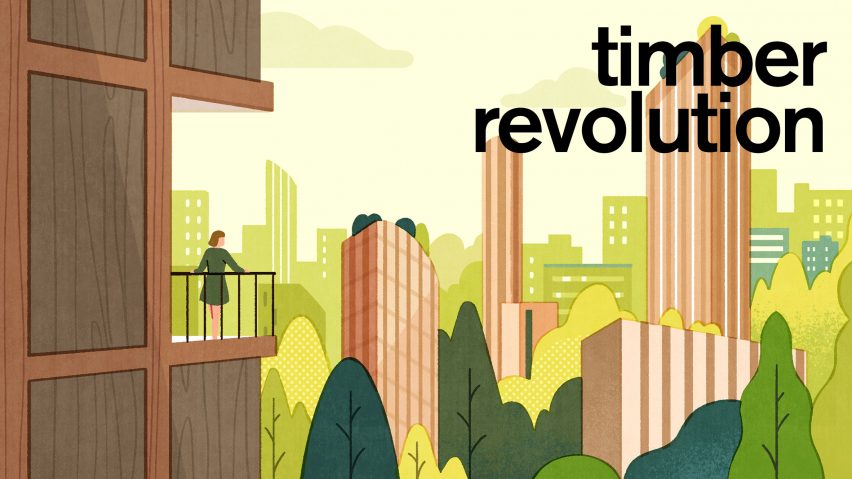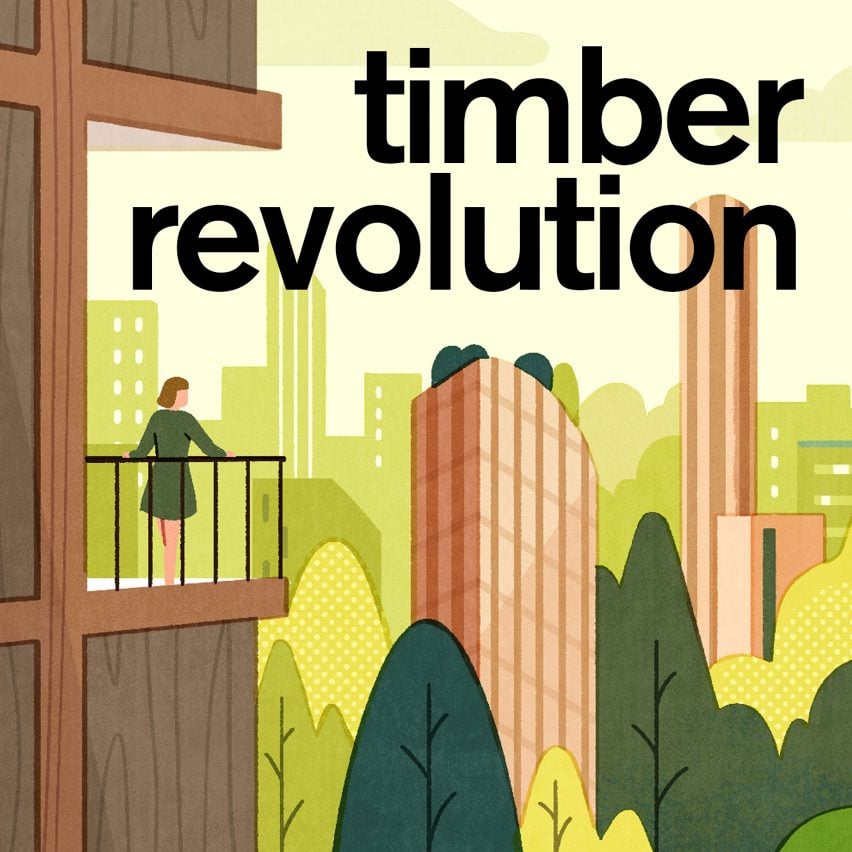
The dawn of the Timber Revolution
Dezeen's latest series investigates the potential of mass timber. Starting today, Timber Revolution will question whether the material can break steel and concrete's hold over the construction industry.
The world's oldest building material is making a comeback. Timber was once used to construct the vast majority of our buildings, but in the 19th and 20th centuries it was usurped by steel and concrete, which continue to dominate the built environment today. Non-combustible, durable, strong and easy to produce in large volumes, these modern materials became favoured as buildings got taller, more complex, more profit-driven.
However, in the past couple of decades timber has re-emerged – this time not as a raw material, but in a variety of super-charged, engineered varieties that can be used to construct these large modern buildings.
Since they were first engineered in the 1990s, products like cross-laminated timber and glued laminated timber, along with lesser-known types of mass timber like dowel-laminated timber, have steadily grown in popularity. Landmark buildings made from mass-timber now feature regularly on the pages of Dezeen amid growing acceptance and understanding of the material.
Engineered timber products growing in popularity
Nevertheless, mass-timber only represents a tiny proportion of the overall number of buildings constructed worldwide each year, with steel and concrete still firmly embedded as the structural material of choice.
According to a recent report, the European cross-laminated timber market produced reached 1.6 million cubic metres in 2022. That's around a third of the amount of concrete used each month in the UK alone – the government reported sales of just under four million cubic metres of concrete per month in 2022.
Outside of Europe adoption is even smaller. In the US, the Wood Products Council estimates that in total only 1,677 mass-timber projects have been built, or are in the process of being designed.
All that could be about to change. The world is slowly facing up to the reality and scale of the climate emergency. And with architects beginning to accept the role that construction – and particularly steel and concrete – plays in the enveloping crisis, mass-timber seems to offer a viable, low-carbon alternative.
In the past few years, embodied carbon – that is, emissions associated with bringing buildings into being as opposed to operational emissions generated during their lifetimes – has become the watchword of architects interested in sustainability. Unlike concrete and steel, which are associated with huge embodied emissions, timber represents the active sequestration of carbon from the atmosphere by trees.
But is it scalable? Can mass-timber really be the low-carbon silver bullet that dramatically reduces construction's carbon impact?
Mass timber's potential and the challenges
The Timber Revolution series will run throughout March. We will talk to experts to investigate whether mass-timber has the potential to truly disrupt the construction industry by becoming a mainstream structural material – or if it will remain a niche product used for a relatively small number of architect-led housing and cultural projects.
We'll present the benefits of mass-timber, with case studies of key projects, interviews with those working in the evolving world of mass-timber architecture. We will also explore in depth the potential issues and limitations of the material.
Is this the dawn of the Timber Revolution?
Timber Revolution is the third in a trio of Revolution series run by Dezeen that investigate how materials and technology are impacting the world we live in. It follows on from the Carbon Revolution series in 2021, which looked at how the much-maligned element could be put to positive use, and the Solar Revolution, which explored how humans could fully harness the power of the sun.

Timber Revolution
This article is part of Dezeen's Timber Revolution series, which explores the potential of mass timber and asks whether going back to wood as our primary construction material can lead the world to a more sustainable future.